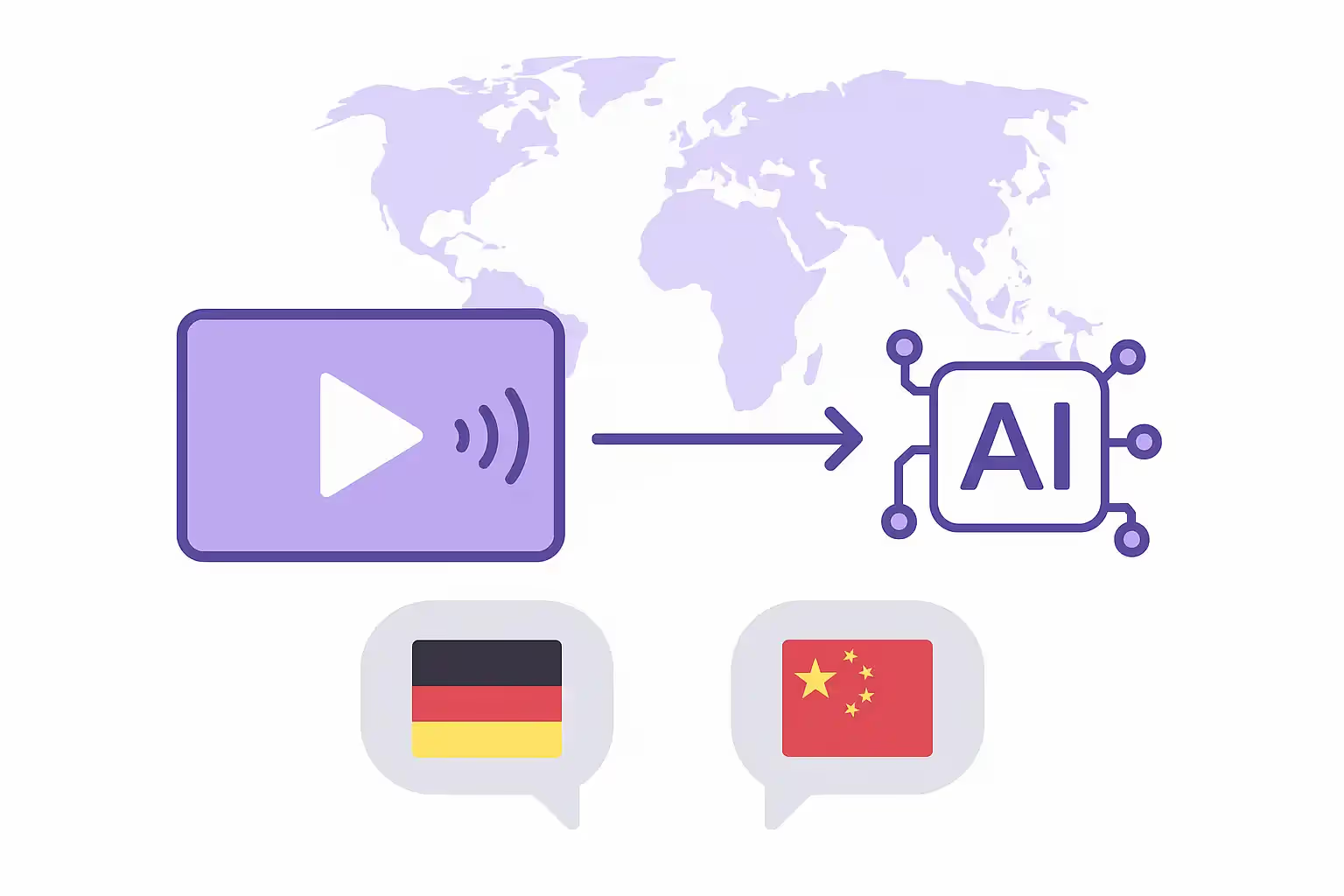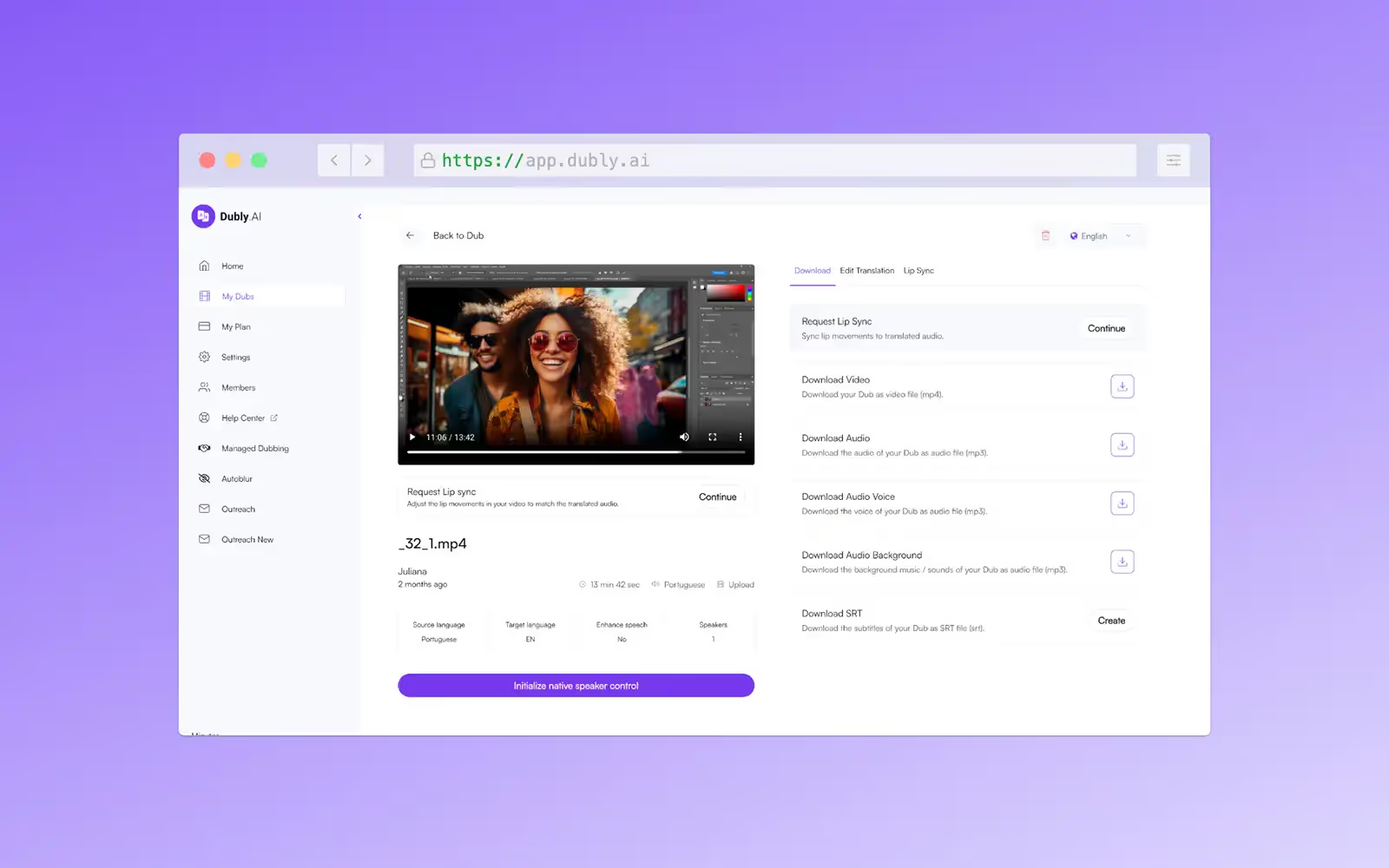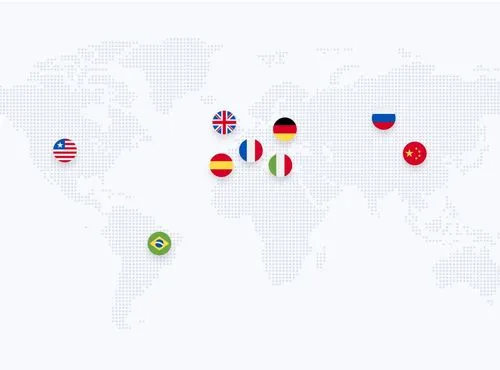Use Cases
September 12, 2025
How to Translate a Video – Step-by-Step Guide

What translation used to require (and why no one wants that anymore)
Until recently, translating a video meant:
- Having the script translated
- Hiring a professional voice actor
- Booking a studio
- Recording, editing, mixing
- (Maybe) syncing the lips manually
It was expensive.
It took weeks.
And it didn’t scale.
One video was a full-blown production. Ten videos became a nightmare.
How it works today – fast and fully online
Thanks to AI platforms like Dubly.AI, video translation is now:
- Fully online
- Voice actor–free
- Studio–free
- Fast, scalable, and affordable
Here’s exactly how it works.
Step-by-step: How to translate your video
1. Upload your video
Go to the platform, upload your video file (MP4 works best).
Make sure the audio is clear – less background noise = better results.
If possible, avoid background music or text baked into the visuals.
2. Choose your target language(s)
Decide which language(s) you want the video translated into. For example:
- German → English
- German → Spanish
- German → French
You can select multiple languages at once – the platform handles them in parallel.
3. Configure your settings
Before translation starts, you can fine-tune how it works:
- Audio optimization: Removes background noise, levels out volume
- Speaker detection: For multi-speaker content like interviews or panels
- Custom vocabulary: Upload brand terms, product names, or specific lingo
- Custom prompts: Define tone, wording preferences, or context for better results
You stay in control. You can edit and adjust everything later on.
4. Start the translation
Now the AI gets to work:
- It analyzes the full video – not just line-by-line
- It understands the context, tone, and flow
- It generates a natural-sounding voiceover in the target language
You can also choose to preserve the original speaker’s voice – just speaking in another language.
5. Preview & adjust
You get a preview of the translated version before it’s finalized.
- Don’t like how something sounds?
- Want to swap out a word or phrase?
- Prefer a different tone?
No problem – you can make changes directly.
And if you want an extra layer of polish, Dubly offers Native Speaker Control: a real human double-checks the output.
6. Generate lip-sync
Once the translation is ready and approved, the final step is syncing the lips.
The system analyzes the face in the video and adjusts the lip movements to match the new voice track – even from side angles or in fast dialogue scenes.
Result: it looks like the speaker is actually speaking the new language.
7. Download and publish
Download your final video and use it wherever you want:
- YouTube
- LinkedIn
- Your website
- Internal platforms
- E-learning systems
No extra editing needed. Just click, download, publish.

What kinds of content are ideal for translation?
Marketing videos – Global campaigns, product launches, ads
Explainer videos – Customer onboarding, app tutorials, website demos
Training & webinars – Internal learning for international teams
Interviews & podcasts – Global reach for thought leadership
YouTube content – Adding multilingual voice tracks to grow subscriber base internationally
FAQ: How to Translate a Video with Dubly.AI
Question: How do I translate a video with Dubly.AI?
Answer: Upload your video, select target language(s), adjust settings, start translation, review, and download with Lip Sync.
Question: Which video formats does Dubly.AI support?
Answer: MP4 with clear audio and minimal background noise works best.
Question: Can I include brand terms or technical vocabulary?
Answer: Yes, custom glossaries ensure consistent use of brand names and terminology.
Question: Does Dubly.AI provide real Lip Sync or only voice-over?
Answer: Dubly.AI delivers true Lip Sync – lip movements are synchronized with the translated audio.
Question: What type of content is best for video translation?
Answer: Marketing videos, e-learning, tutorials, webinars, interviews, and social media content.
{{cta}}
{{callout}}
Final thoughts: Video translation is no longer a bottleneck
You don’t need a studio.
You don’t need voice actors.
You don’t need to reshoot.
With Dubly.AI, you can create fully translated, lip-synced, natural-sounding videos – in just a few clicks.
- Upload your video
- Pick your language
- Review and fine-tune
- Download and publish
Done.
Does the Dubly.AI free trial include the Lipsync feature?
Yes. We believe you need to experience the full technology to understand its value. The free trial includes Generative Lipsync and Voice Cloning, not just simple audio translation.
Is there a difference between a standard "Video translater" and Dubly.AI?
Yes. A standard "Video translater" often only translates text or audio. Dubly.AI is a comprehensive AI solution that adapts the visuals (mouth movements) to the audio, creating a seamless experience.
Can I use Dubly.AI for long-form content?
Yes. While many free tools limit you to 60 seconds, Dubly’s engine is built for scale – from TikTok Shorts to hour-long corporate training modules.
Can I use translate video free tools to internationalize my content?
Yes, absolutely. Using free tools is a great starting point to test new markets without a budget. However, keep in mind that methods like subtitles or basic video translator apps usually only transfer information, not emotion. To truly internationalize your brand's personality and retain viewers, you will eventually need lipsync technology to ensure the audience feels connected to you, not just the text.
Does a free ai video translator work for all types of videos?
It works well for content where the speaker is not visible, such as screen recordings or faceless tutorials. However, for any video featuring a person speaking on camera, a standard tool often falls short. Because it lacks lipsync, the visual mismatch distracts the viewer. For content meant to build trust or emotion, you need a solution that adapts both the voice and the visuals.
Is there a free version of Dubly.AI?
You can translate your first video for free so you can validate the quality with your own files. We believe in letting you prove the value first.
Does this work for any language?
Our AI supports over 30 languages, covering the majority of global markets (English, Spanish, German, French, Japanese, Mandarin, etc.). The Lip Sync works universally across these languages.
How accurate is the translation?
AI translation is very good (95%+), but for critical content, context matters. That is why we offer Native Speaker Control (NSC) as an add-on, where humans review the AI's work. This combines the speed of software with the precision of a native speaker.
Can I automate this process?
Yes. For agencies, media houses, or companies with high volume, we offer an API. This allows you to integrate video translation directly into your content management workflow, removing manual upload steps entirely.
Über den Autor

Newest articles

Use Cases
How to Translate Video Free: 3 Ways to multiply your reach
Looking for an AI video translator? We answer how to translate video free using 3 methods: Subtitles, Basic TTS, and Professional Lipsync.

Simon Pieren
December 8, 2025

Use Cases
Translate Video Free: A Guide to AI Translation, Lip Sync & Voice Cloning
Looking to "translate video free"? Learn the technical differences between standard dubbing and generative AI Lip Sync, and how to test professional quality risk-free.

Simon Pieren
November 28, 2025

Use Cases
How AI Video Translation Connects Global Teams
How AI video translation breaks down language barriers in enterprises - secure, empathetic, and scalable.

Simon Pieren
November 24, 2025
